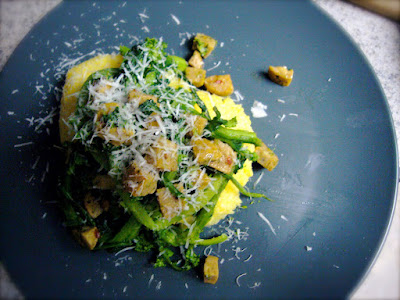I tweaked, and I tested, and I tweaked some more, and I found it! My go-to whole wheat, reduced fat, lightly sweetened scone recipe. Sounds about as appetizing as cardboard, huh?
Well, you would be wrong my friend. Trust me, if you don't believe that you can make scones without heavy cream, or a ton of butter, or mounds of white sugar, try it just once. These are amazingly light and the whole wheat flour gives them a great flavor. The agave nectar (or maple syrup if that's what you have) adds just a hint of sweetness, and if you want to guild the lily, the sprinkling of raw sugar adds a sweet outer crunch. They are infinitely adaptable to add-ins--like cranberries and orange zest in the fall, or more apropos for the coming months, blackberries with lime zest.
One of the most popular posts I ever wrote was about my all-time favorite scone recipe. (Although by popular, I mean my aunt made it and liked it a lot, but that is likely to be the height of my fame, so I'm going to go with it.) And that recipe is fantastic. Too good in fact, because it uses an entire cup of heavy cream and quite a bit of sugar. It's a recipe that I reserve for holidays. This recipe is for the other 10 months out of the year, when I'm doing penance for my holiday extravagances.
I started with this recipe on 101 Cookbooks, the hands-down ruling blog of natural cooking. I loved the whole wheat pastry flour and the oats but holy cow 11 tablespoons of butter! That put a kink in my "healthy" scone quest...
So I tweaked, and I tested, and I tweaked some more, and I found it. About half the butter, much more milk, and a little bit of egg later, and I had it.
Whole-Wheat, Everyday, Scones
Makes about 9 large scones or 18 little ones
Ingredients:
2 tbs. lemon zest (optional, but highly recommended)
2 1/2 cups whole wheat pastry flour
1/2 cup rolled oats (not instant)
1 1/2 tbs. baking powder
1/2 tsp. salt
3/4 stick (6 tbs.) cold unsalted butter, cut into bits
1 large egg
1 cup 2% reduced fat milk*
1/4 cup agave nectar (or real maple syrup, preferably grade A)**
turbinado sugar (raw sugar) for sprinkling on top (optional)
Directions:
-Preheat oven to 400 degrees.
-Zest the lemons or orange with a grater or use a vegetable peeler, then finely, finely chop the zest.
-Combine the zest, flour, oats, baking powder, and salt in a large bowl. Cut in the butter until the mixture resembles a course meal. The easiest way to do this is to dice the butter very small and make sure each piece is separated before you add them into the flour. The flour will keep them from sticking back together so shake the bowl before adding in more pieces. Then use two knifes to cut the butter pieces even finer. It doesn’t have to be perfect.
-If adding berries, nuts or other mix-ins, add to the dry mixture at this point.
-In another small bowl beat the egg, milk, and maple syrup together.
-Mix the liquid mixture into the dry mixture, just until combined. (There can be a few small dry spots, it will come together when you have it on the counter.)
-On a lightly flour surface, dump the dough out, knead it once or twice and press it into a 1 inch thick rectangle with your hands. (If it too sticky to do this just sprinkle it with a little more flour).
-Cut the dough into nine squares or cut each square into two triangles. (It helps if you put a little flour on the knife so it doesn’t stick.)
-Brush the top of each scone with a little milk if you want to sprinkle with turbinado sugar.
-Place the scones an inch apart on a baking sheet lined with parchment paper, and bake in 400 degree oven for 15 to 20 minutes or until they start browning on the edges.
NOTE: You can freeze the scones before you bake them, then bake them as you need them. If freezing, place baking sheet in the freezer after you shape the scones for at least one hour or until the scones are hard and frozen. Place the scones in a freezer bag until ready to bake. Defrost in the refrigerator on a parchment-lined baking sheet for a few hours then bake.
1 1/4 cups fresh cranberries, chopped coarse (approx. in quarters) mixed with 2 tbs. sugar (or you can use dried cranberries, but don’t add sugar to them) and orange zest.
1 cup fresh or frozen blueberries, raspberries, blackberries, or a combination. (I like lime zest with the blueberries and the blackberries.)
*If you don't normally buy 2% milk, I've also used 1/2 cup heavy cream with 1/2 cup skim milk.
**I've tried both, both were delicious, but I have a slight preference for the agave. But this bit of information (found on allaboutagave.com) might be useful if you are deciding which to buy: "While the sweetness of agave and maple [syrup] is comparable (and agave's caloric count is higher), agave still has the lower glycemic index (between 11 and 30). The most daunting property of maple syrup may be its price. Because it takes approximately 40 gallons of raw maple sap to produce a single gallon of finished syrup, the cost of pure maple syrup can be easily twice that of agave syrup, making it prohibitively priced for regular use." So if you're on a budget buy agave.














